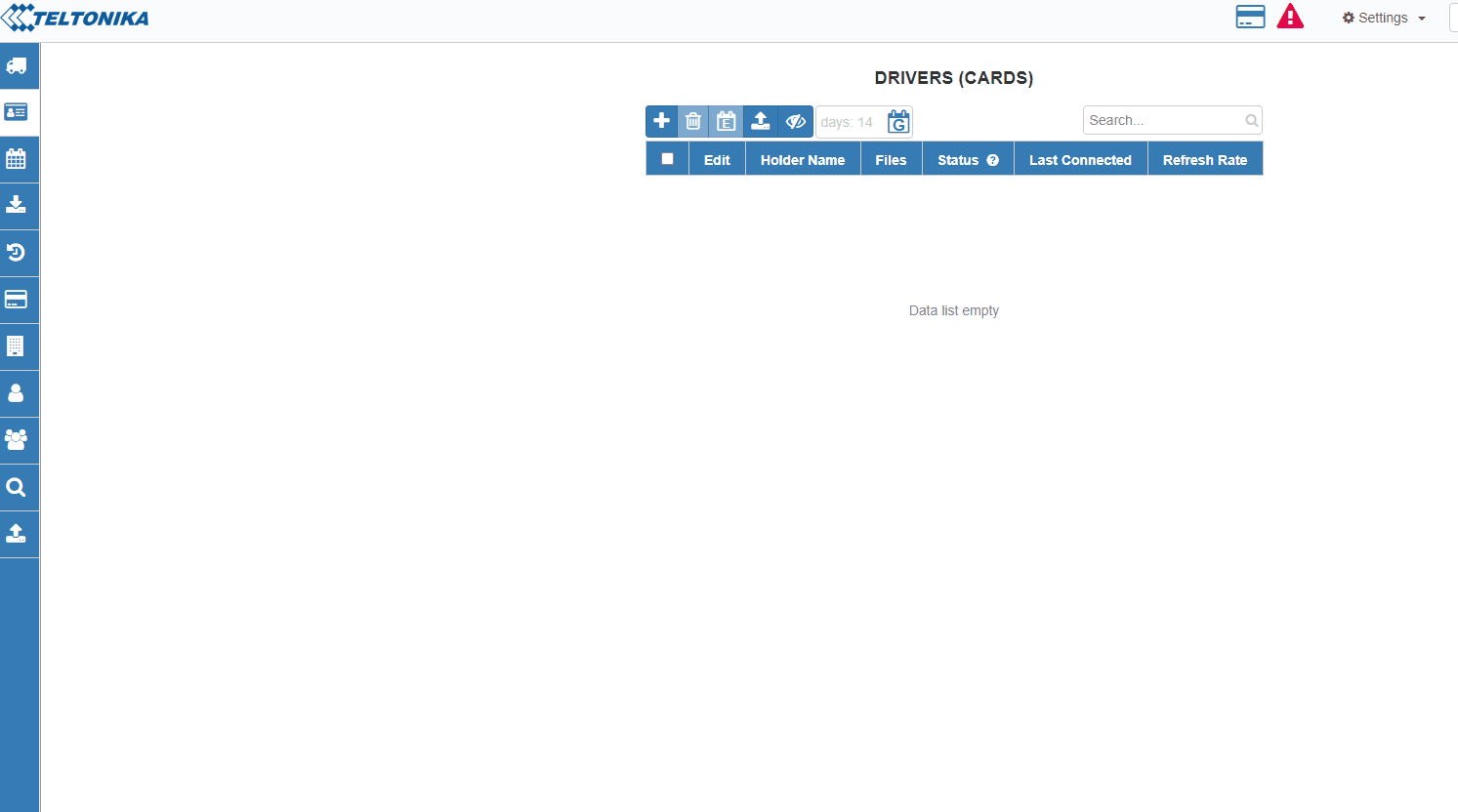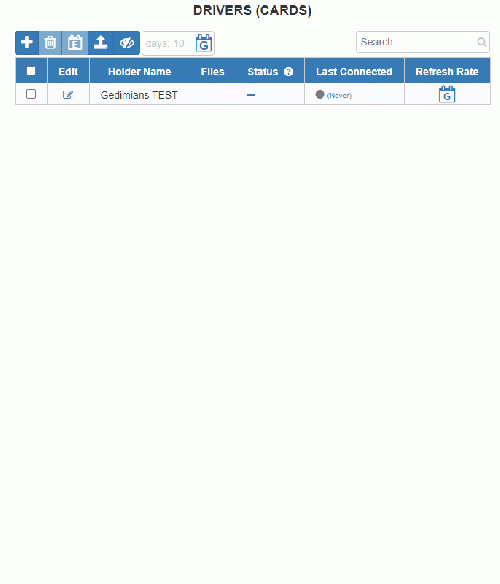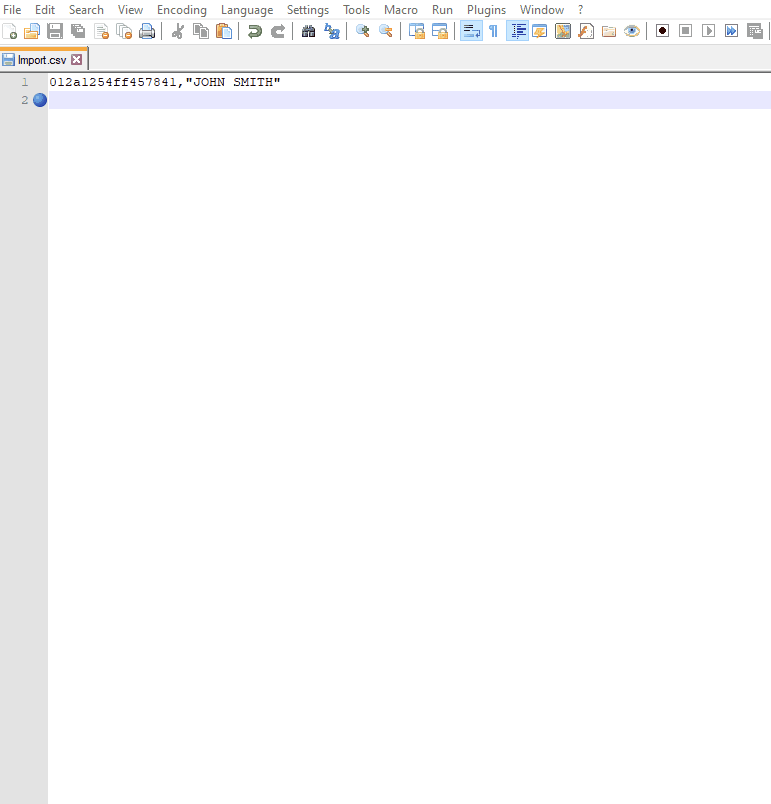WEB Tacho Drivers Cards: Difference between revisions
| Line 6: | Line 6: | ||
[[image:TACHO_WEB_DRIVERS1.png|center]] | [[image:TACHO_WEB_DRIVERS1.png|center]] | ||
==Global/Specific types== | ==Global/Specific types== | ||
Revision as of 11:22, 28 July 2020
Main Page > Software & Applications > WEB Tacho > WEB Tacho Drivers CardsDrivers Cards
The new schedule logic for the driver's cards is added to the TACHO WEB solution. Solution ONLY works with Teltinia FMX640 (FMB640, FMC640, FMM640) tracker that have 00.03.77 or newer firmware installed.
A new type of tab is created called “Driver cards”. All units in this tab are not tied down to device IMEI like vehicle units, but to separate Driver's card IDs.

Global/Specific types
Driver card units will have two types of file refresh rate:
- Global – the time period in days, which describes how often new files should be downloaded. The global period should be configured on-page, but not device separately.
The global refresh rate will be marked as ![]()
How to change Global refresh rate:
- Specific – same as global, but the parameter is set on every driver card unit separately.
The global refresh rate will be marked as ![]()
The global schedule is set to all Driver card units at once. If the user wants to change download frequency for a specific driver, he can do that by editing the Driver card unit.
Adding Driver ID
When adding Driver ID to the Tacho WEB system, Driver's Name and Driver's ID must be specified
- Driver ID must be exactly 16 characters in length.

Importing Driver Cards from *.CSV file
In order to add multiple Driver Cards to TACHO WEB, "import using .CSV" can be used.
CSF file data should contain:
- Card Number
- Holder's Name
For example: (e.g: 012a1254ff457841;"JOGH SMITH"). Expected data fiems delimiters: comma or semicolon.
Example .CSV file can be downloaded from here: ![]()


